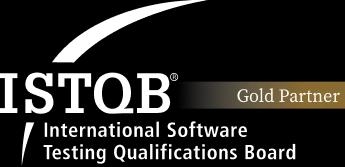
What is an electronic lesson plan? Benefits, how to create and use effectively
In the context of technology's increasing influence across various fields, education is no exception. One notable advancement is the emergence of electronic lesson plans, a tool that transforms the way knowledge is conveyed and enhances the engagement of lessons. An electronic lesson plan is not just a simple teaching outline but also integrates multimedia elements such as images, videos, and audio to create a dynamic and effective learning environment. This article will help you understand what an electronic lesson plan is, the benefits it brings, and how to create and use it effectively in teaching.
I. What is an Electronic Lesson Plan
An electronic lesson plan is a digitally constructed and presented teaching plan using online tools like PowerPoint, Google Slides, Canva, or other specialized software to design and deliver lessons. It not only contains knowledge content but also integrates images, videos, audio, and interactive activities, enhancing the attractiveness and liveliness of the lesson.
The advent of electronic lesson plans is part of the trend to innovate teaching methods, improving the learning experience and effectiveness for students. It serves as evidence of the digital transformation in the education sector, supporting teachers in creating more engaging, dynamic, and modern lessons.
II. Benefits and Limitations of Electronic Lesson Plans in Education
Electronic lesson plans are increasingly popular among teachers due to the notable advantages they offer in teaching. However, alongside the benefits, electronic lesson plans also have some limitations that teachers need to consider. Let's delve deeper to see if electronic lesson plans are truly suitable for you and your classroom!
1. Benefits of Electronic Lesson Plans
Enhanced interaction and engagement: Unlike traditional lesson plans that typically consist of text or printed images, electronic lesson plans can incorporate dynamic images, videos, and interactive questions, making the lesson more engaging. This not only captures students' attention but also helps reinforce understanding and retention of information.
Time-saving and easy to update: An electronic lesson plan can be created once and reused multiple times with minor adjustments. Teachers can update content quickly without the need to start from scratch, saving significant time and effort.
Convenient storage and sharing: Electronic lesson plans can be stored on cloud platforms or electronic devices, allowing teachers and students easy access with an internet connection. Additionally, sharing documents becomes quick, convenient, and efficient.
Environmentally friendly: Minimizing the use of printed paper for electronic lesson plans contributes to environmental protection, reducing waste and conserving resources.
2. Limitations of Electronic Lesson Plans
Dependence on technology: When using electronic lesson plans, classrooms need supporting devices such as computers, projectors, and stable internet connections. This may pose challenges for some schools in rural areas or locations with limited technology access.
Requires technology skills from teachers: To create and use electronic lesson plans effectively, teachers need basic technology skills and knowledge of how to use editing software.
Information security risks: Storing and sharing lesson plans on online platforms require careful attention to avoid data loss or privacy breaches. Without proper security measures, electronic lesson plans may be vulnerable to intrusion or data loss, causing difficulties and inconvenience for teachers.
III. Distinguishing Electronic Lesson Plans from Traditional Lesson Plans
Electronic lesson plans and traditional lesson plans are both teaching support tools, but they have distinct differences in form, presentation methods, and applicability in the classroom. Understanding these differences will help teachers choose the most suitable method for each teaching scenario. Below are some key comparison criteria between electronic lesson plans and traditional lesson plans.
| Criteria | Electronic lesson plan | Traditional lesson plan |
| Presentation format | Prepared and presented on electronic devices such as computers, projectors, or interactive boards | Usually printed on paper or handwritten notes |
| Multimedia | Can integrate images, videos, audio, presentation effects, and interactive elements | Limitations in using audiovisual media |
| Update capability | Easily edit, update content within minutes | Difficult to edit, need to reprint if changes are required |
| Interactivity | Allows students to participate in answering questions, taking quizzes directly on the screen, increasing interaction | Mainly for one-way communication from teachers, limited interaction |
| Sharing capability | Easy storage, sharing through online platforms like Google Drive, email | Difficult to share, usually only in print form for individual teachers |
IV. How to create and use effective electronic lesson plans
To truly leverage the effectiveness of electronic lesson plans in the teaching process, teachers need to know how to create quality content and use this tool effectively. Here are specific guidelines to keep in mind when developing electronic lesson plans:
1. Define the objectives and target audience of the lesson
First and foremost, teachers need to clearly define the objectives of the lesson and the target group it is aimed at. This helps in building a lesson plan that is suitable for the students' level and age, ensuring that the content and presentation are adjusted correctly for easy student comprehension.
2. Choose suitable software and support tools
There are many software tools available to create electronic lesson plans, ranging from popular tools like PowerPoint, Google Slides, Canva to specialized educational platforms like Google Classroom, Microsoft Teams, TeamHub LMS, and Edulive. Depending on the needs and complexity of the lesson, teachers can choose the appropriate tool:
PowerPoint and Google Slides: Suitable for regular lessons, easy to use and widely used. Teachers can create visually appealing slides with images, videos, and motion effects.
Google Classroom and Microsoft Teams: Support classroom management, assignment creation, testing, and communication with students. These platforms are suitable for online or blended learning classes, allowing teachers to easily share documents and monitor student progress.
Canva and Edulive: Suitable for lessons requiring beautiful images or high interactivity, helping students actively engage in the lesson.
3. Design clear and visual content
When designing electronic lesson plan content, ensure that the lesson is presented clearly, easy to understand, and visually appealing:
Use colors and fonts: Choose suitable colors and fonts to highlight key points, but avoid using too many colors that may strain the eyes. Fonts should be clear, easy to read, and the right size for students to see easily.
Insert images and videos: Illustrative images and short videos can help students visualize the content more easily, while stimulating their imagination and interest. However, only use them when necessary to avoid distracting students' focus.
Break down information: Instead of presenting too much information on one slide, divide the content into concise sections to help students easily grasp and not be overloaded with information.
4. Integrate interactive activities to increase engagement
One of the greatest benefits of electronic lesson plans is the ability to create interactive activities, helping students actively participate in the lesson and increase engagement:
Insert fun quiz questions, short quizzes: Teachers can create fun quiz questions or short quizzes to quickly assess students' understanding of the recently learned content. Tools like Mentimeter, Kahoot, or Edulive are very useful for this purpose.
Use interactive features on online platforms: When teaching online, teachers can use screen sharing, group discussions, or virtual whiteboards for students to participate and discuss the lesson content together.
Use mind maps and concept diagrams: This is a great way for students to grasp and organize knowledge. Tools like MindMeister or Miro can help teachers create mind maps or dynamic diagrams.
5. Update and upgrade lesson plans regularly
Electronic lesson plans need to be regularly updated to ensure relevance and incorporate the latest knowledge. Teachers can adjust lesson plans based on student feedback and change lesson content according to new requirements from the curriculum.
Collect feedback from students: After each lesson, teachers can encourage students to provide feedback on the electronic lesson plan, thereby improving and optimizing the content.
Refresh lesson plans regularly: Technology and educational content are constantly changing, so updating lesson plans is necessary to ensure students always have access to new and interesting knowledge.
V. Conclusion
Electronic lesson plans are a useful tool that not only helps teachers save time and effort in designing lessons but also contributes to enhancing the quality of education through interactive and dynamic elements. When designed and used appropriately, electronic lesson plans can become a bridge between knowledge and students, creating an interesting and inspiring learning environment. In the digital age, grasping and utilizing modern educational tools like electronic lesson plans not only helps teachers meet the learning needs of the new generation but also opens up opportunities to improve education quality sustainably and effectively. The above is the entire content that Tokyo Tech Lab wants to send to you, don't forget to follow us to update more useful knowledge about educational technology and modern teaching trends.
SHARE THIS ARTICLE
Author
Huyen TrangSEO & Marketing at Tokyo Tech Lab
Hello! I'm Huyen Trang, a marketing expert in the IT field with over 5 years of experience. Through my professional knowledge and hands-on experience, I always strive to provide our readers with valuable information about the IT industry.
More Posts



About Tokyo Tech Lab
Services and Solutions
Contact us
© 2023 Tokyo Tech Lab. All Rights Reserved.







